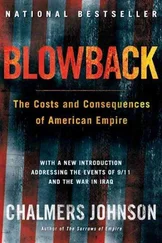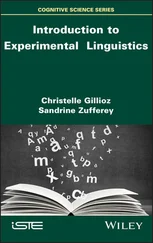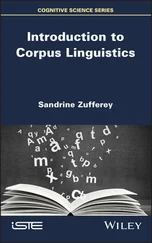The views of lay people about language are often quite simplistic. One illustration of this concerns the relationship between the so-called standard languages and the non-standard dialects associated with those languages. Standard French
and Standard English, for example, are varieties of French and English that have written grammar books, pronunciation and spelling conventions, are promoted by the media and other public institutions such as the education system and are considered by a majority of people to be the ‘correct’ way to speak these two languages. Non-standard varieties (sometimes called ‘dialects’) are often considered to be lazy, ungrammatical forms, which betray a lack of both educational training and discipline in learning. Linguists strongly disagree with this view. The study of language use has shown not only that non-standard varieties exhibit grammatical regularity and consistent pronunciation patterns in the same way that standard varieties do, but also that a vast majority of people will use non-standard features at least some of the time in their speech. Sociolinguistic research has demonstrated that the speech of most people is, at least in some respects, variable, combining, for example, both standard and non-standard sounds, words or grammatical structures. The study of language variation involves the search for consistent patterns in such variable linguistic behaviour.
Another area where language variation plays a crucial role is in the study of language change. It is the principal concern of historical linguistics to investigate how languages change over time, and until recently, historical linguists have studied language change by relying exclusively on diachronic methods. These involve
analysing the structure of language from a succession of dates in the past and highlighting those structural features (phonological, morphological or syntactic) that appear to have changed over that period of time. For obvious reasons, if we are considering a form of a language from many years ago, we do not have access to native speakers of the language; as a consequence, historical linguists have had to rely largely on manuscripts from the past as evidence of how languages may once
16
linguistics
have been spoken, but such evidence is of variable quality, particularly when we take account of the fact that very few people were able to write in the pre-modern era. In these circumstances, it is difficult to judge just how representative surviving manuscripts are of the way ordinary people actually spoke.
As an alternative to diachronic methods and aided by the invention of the tape recorder allowing the collection of a permanent record of someone’s speech,
William Labov has pioneered a synchronic approach to studying language
change. Whereas diachronic techniques demand language data from different
periods in time, Labov’s synchronic, so-called apparent-time, approach requires data to be collected at only one point in time. Crucially, the data collected within the same community are from people of different ages and social groups. Labov reasoned that if the speech of young people within a particular social group is different from that of old people in the same group, then it is very likely that language change is taking place. This technique has a number of advantages over the traditional historical method. Firstly, the recorded language data constitute a considerably more representative sample of the speech patterns of a community than do the manuscript data of traditional historical linguistics. Secondly, it allows the linguist to study language change as it is actually taking place – traditionally, historical linguists had believed this to be impossible. Finally, it allows the linguist to study how language changes spread through society, answering questions such as, Which social groups tend to lead language changes? How do language changes spread from one social group to another? (exercises 9 and 10).
Labov’s apparent-time model assumes that a difference between young and old
with respect to a certain linguistic feature may be due to linguistic change. Not all variable linguistic features that are sensitive to age variation are necessarily indicative of language changes in progress, however. Slang words, for example, are often adopted by youngsters, but then abandoned when middle age is reached. Similarly, some phonological and grammatical features, such as the use of multiple negation (e.g. I haven’t got none nowhere), seem to be stable yet age-graded, i.e. not undergoing change, but associated with a particular age group, generation after generation.
This brief introduction to the methods and concerns of sociolinguistics may
seem to suggest that these are far removed from those of other types of linguist.
However, in studying variable patterns of language behaviour and the language change that this variation may reveal, the sociolinguist seeks to uncover universal properties of language, attempting to address questions such as, Do all languages change in the same way? We have already met this preoccupation with universals in our earlier discussion, so we can see that at this level, sociolinguistics exhibits important affinities with other approaches to the study of language. However, a fundamental difference remains: the sociolinguist’s questions about universals require answers in which the structure of society plays an integral part. In this regard, they differ from the questions with which we opened this introduction, but there is no conflict here. Taken together, the various emphases we pursue in this book present a comprehensive picture of the complex and many-faceted phenomena which the study of language engages.
Introduction
17
Exercises
1.
Indicate which of the following are acceptable or unacceptable
sentences in English. Taking particular account of the meanings of
the words in the examples, how do you think you know that the
unacceptable sentences are unacceptable?
(a) John must leave now
(b) John must to leave now
(c) John has to leave now
(d) John has leave now
(e) It is likely that John will overeat
(f) John is likely to overeat
(g) It is possible that John will overeat
(h) John is possible to overeat
2.
Find further examples of sets of phrases or sentences from English or
other languages with the characteristics of (9) in the text. This is very, very easy! If we extend the sequence in (9), with the sentences becoming longer and longer and longer (!), we get to a point where
we might be convinced that no one would ever use such a sentence.
What reasons can you think of for use being restricted in this way? Is it
possible to specify with confidence the point in the sequence at which
there is no likelihood of a sentence being used? Do these concerns have
anything to do with the theory of language?
3.
In an English dictionary, turn to words beginning with the prefixes
im- (e.g. impossible, impolite) and in- (e.g. indelicate, intolerant).
What generalisations, if any, can you formulate about the first sound
of the words to which im- and in- are prefixed? How might your
generalisations be described in terms of assimilation?
4.
Each of the following sentences is ambiguous. Provide paraphrases for
the two (or more) interpretations in each case:
(a) John’s picture hangs in the Tate
(b) John loves his dog and Bill does too
(c) What John became was horrible
(d) Bill always eats in the best restaurant in town
(e) Do Americans call cushions what the British call pillows?
(f) John introduced himself to everyone that Mary did
5.
A further argument for an innate language faculty based on the
Читать дальше
![Andrew Radford Linguistics An Introduction [Second Edition] обложка книги](/books/397851/andrew-radford-linguistics-an-introduction-second-cover.webp)











